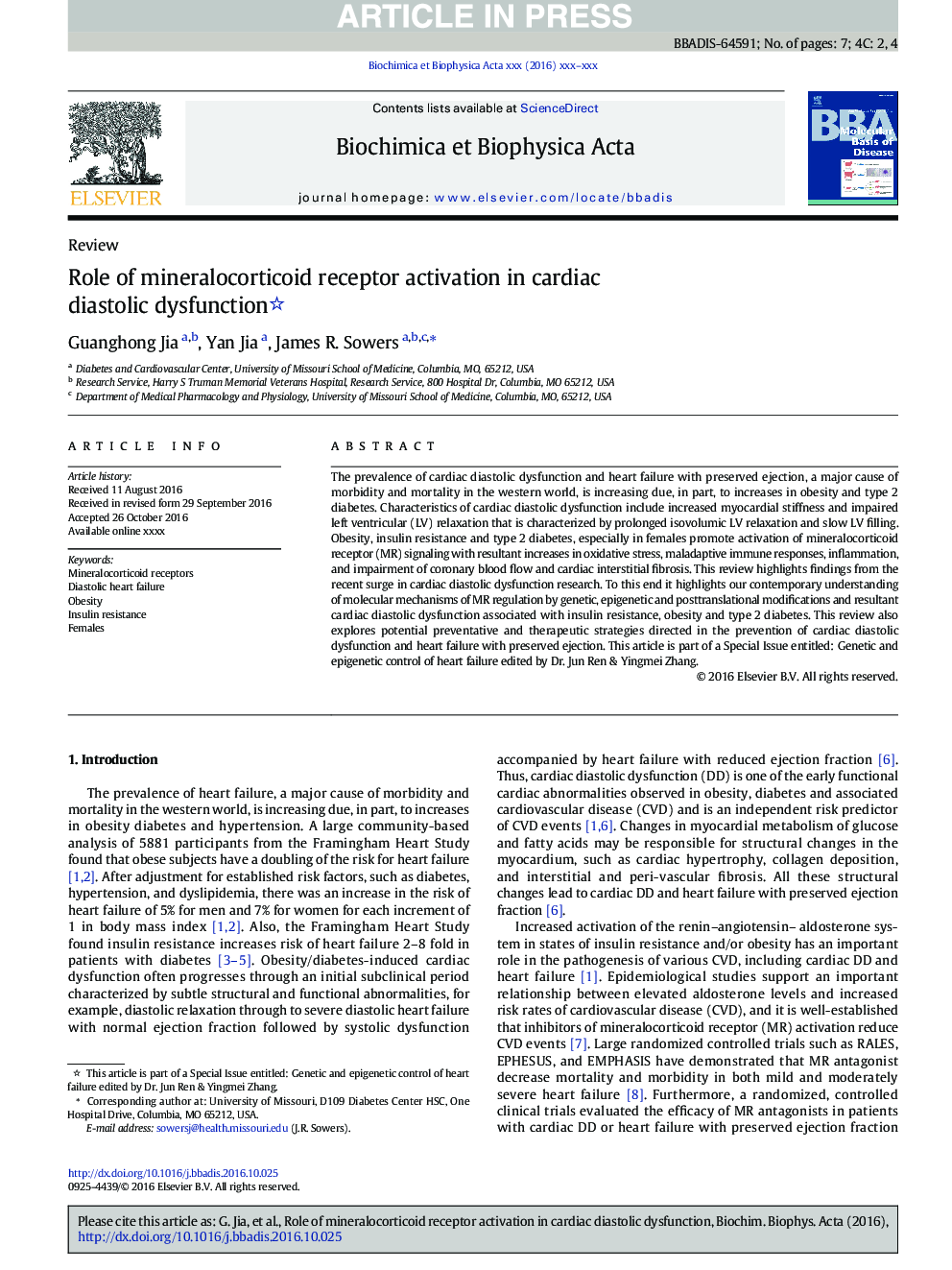| Article ID | Journal | Published Year | Pages | File Type |
|---|---|---|---|---|
| 5501227 | Biochimica et Biophysica Acta (BBA) - Molecular Basis of Disease | 2018 | 7 Pages |
Abstract
The prevalence of cardiac diastolic dysfunction and heart failure with preserved ejection, a major cause of morbidity and mortality in the western world, is increasing due, in part, to increases in obesity and type 2 diabetes. Characteristics of cardiac diastolic dysfunction include increased myocardial stiffness and impaired left ventricular (LV) relaxation that is characterized by prolonged isovolumic LV relaxation and slow LV filling. Obesity, insulin resistance and type 2 diabetes, especially in females promote activation of mineralocorticoid receptor (MR) signaling with resultant increases in oxidative stress, maladaptive immune responses, inflammation, and impairment of coronary blood flow and cardiac interstitial fibrosis. This review highlights findings from the recent surge in cardiac diastolic dysfunction research. To this end it highlights our contemporary understanding of molecular mechanisms of MR regulation by genetic, epigenetic and posttranslational modifications and resultant cardiac diastolic dysfunction associated with insulin resistance, obesity and type 2 diabetes. This review also explores potential preventative and therapeutic strategies directed in the prevention of cardiac diastolic dysfunction and heart failure with preserved ejection. This article is part of a Special Issue entitled: Genetic and epigenetic control of heart failure edited by Dr. Jun Ren & Yingmei Zhang.
Related Topics
Life Sciences
Biochemistry, Genetics and Molecular Biology
Ageing
Authors
Guanghong Jia, Yan Jia, James R. Sowers,
